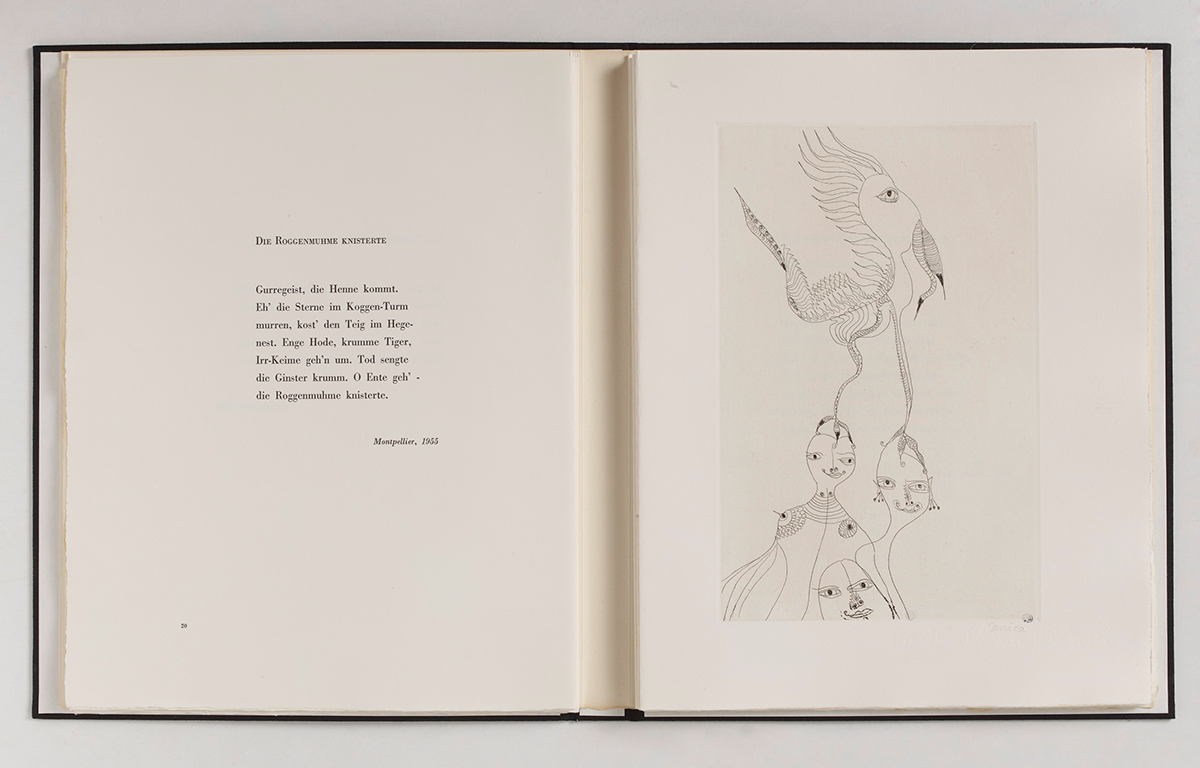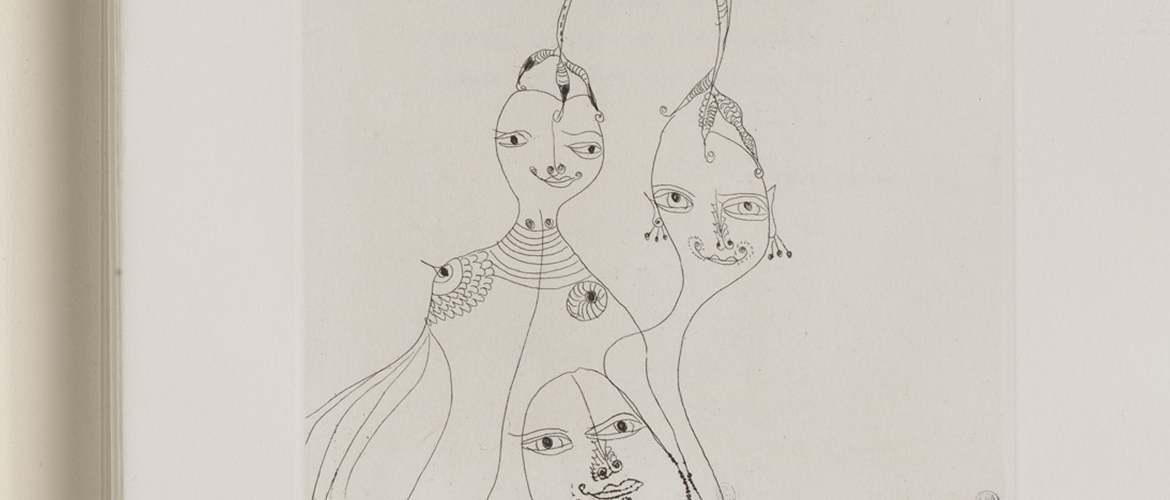Unica ZÜRN (Berlin, 1916 - Paris, 1970)
Oracles and spectacles, Paris, Georges Visat. 1967, n° 8/120, artist's book, 12 unbound leaves gathering fourteen anagram poems illustrated with eight etchings (1966) on vellum, eight etchings out of text on mother-of-pearl colored Japanese paper; Postscript and drypoint frontispiece signed Hans Bellmer, 4° 50082
Born in Berlin in 1916, Unica Zürn left school at the age of 15 to work in a textile factory. At first, she led a life far removed from the arts. It was not until the age of 33 that Unica Zürn embarked on a career as a professional artist and writer. Her meeting with Hans Bellmer in 1953 was decisive. He introduced her to the art of anagrams and drawing. She accompanied him to Paris where she was introduced to the circle of surrealists. When she died in 1970, she left behind an immense body of work, both poetic and drawn, slightly overshadowed by the events that marked the life of the artist, which (too) often gave rise to a psychoanalytical reading of her creations.
The anagrams that Hans Bellmer made her discover take a primordial place in Zürn's work. Between 1953 and 1964, she composed 124 anagram poems, several of which were inserted into her drawings. Her first collection of anagrams, Hexentexte, was published in 1954 with a preface and drawings by Hans Bellmer, followed in 1967 by Oracles et spectacles with a frontispiece still signed by Hans Bellmer.
With the morphological dismantling of the word, by deconstructing the sign and the representation, the anagram dynamites the symbolic operation of the language. In this sense the anagrams of Unica Zürn remain closely related to the aesthetic step of Hans Bellmer who strives to decompose the bodies. Without indulging in a purely psychoanalytical reading of Unica Zürn's drawn anagrams, one can nevertheless see in them, in resonance with the illness that struck her, an attempt to reassemble, to reconstruct a fragmented self and the desperate search for an unthinkable unity.

Oracles et spectacles, Paris, Georges Visat. 1967, n° 8/120, livre d’artiste, 12 feuillets non reliés réunissant quatorze poèmes anagrammes illustrés de huit eaux-fortes (1966) sur vélin de rives, huit eaux-fortes hors texte sur papier nacre japon de couleur ; Postscriptum et frontispice à la pointe sèche signé Hans Bellmer, 4° 50082



